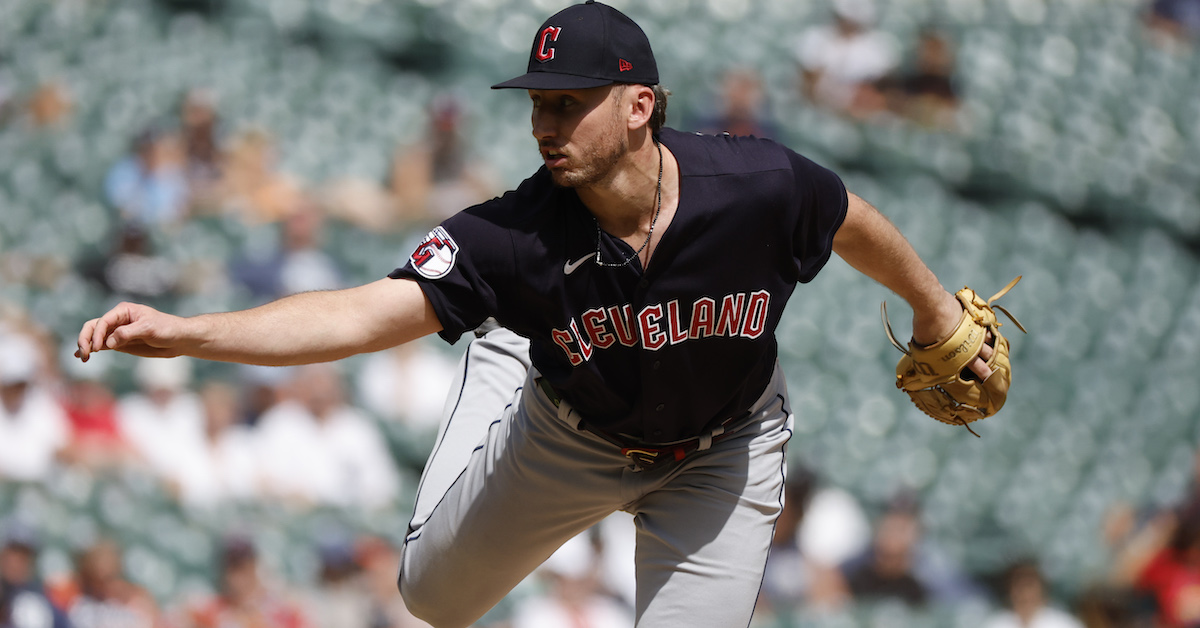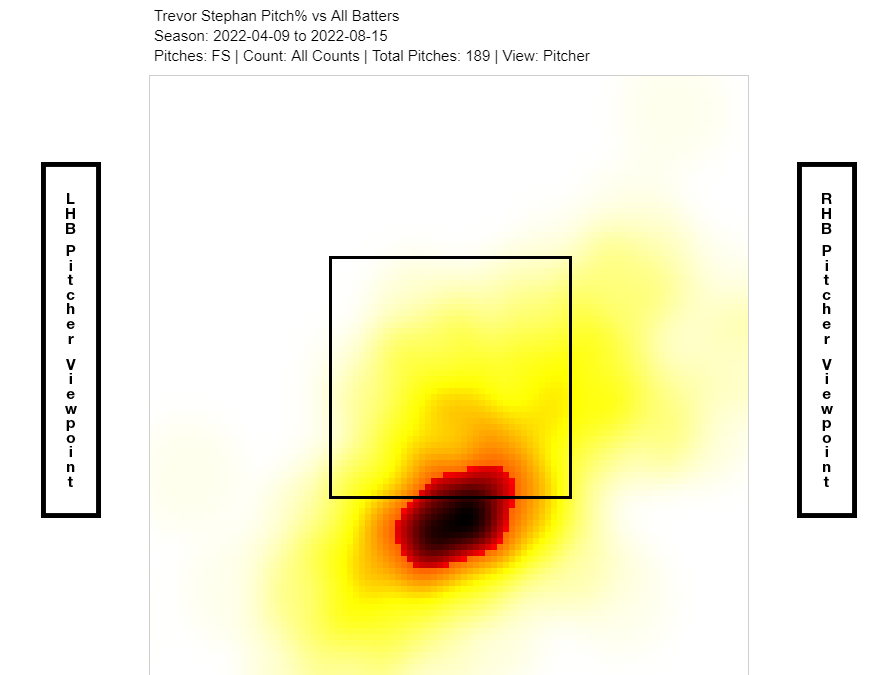The Best Reliever You’ve Never Heard Of

If you want to play a game you probably won’t win, watch a reliever you haven’t heard of pitch one inning and try to decide if they’re good. I don’t want to say it’s impossible, because that’s not quite the case, but it’s phenomenally difficult. Do they throw hard? Probably, because most relievers do now. Do they have a secondary pitch that makes hitters look like they’re playing baseball for the first time? Probably, because trying to hit a slider when you just saw a fastball is one of the hardest things to do in sports.
The eye test isn’t enough. What’s worse, the results test isn’t enough. Reliever ERAs are unreliable across whole seasons, never mind a single week or month. One seeing-eye single, or one down-the-middle cookie that gets fouled back instead of pummeled to Kalamazoo, can completely change a pitching line. Even more “stable” statistics bounce around wildly in small samples; whether a reliever has their good slider working or not might be the difference between a three-strikeout outing or a few walks and a trip to the showers.
Why the long windup about how we can’t know how good pitchers are? Well, I’m pretty sure Guardians reliever Trevor Stephan is good, whatever the sample size. I know what I just said… but, look at his pitches, will you?
First, you’ve got the high-velocity four-seam fastball, and quite frankly, it’s probably his worst pitch. He sits 95–97 mph with it and imparts a ton of spin on the ball, but the pitch plays worse than its measurables. He doesn’t convert enough of that spin into movement, and his low arm slot leads to a big problem: he sits right on the “line of normality,” as Kevin Goldstein called it, meaning it’s something hitters can track comfortably. The arm slot sometimes makes up for that against righties — he can give a sidearm, this-fastball-is-headed-for-your-hip look despite his extreme-first-base-side positioning — but for the most part, batters have been up to the challenge.
That’s not to say it’s a bad pitch, but you can understand why it plays below its potential. When Stephan throws it in the strike zone, batters make contact at an average rate. It’s a nice building block pitch — having a fastball you can throw in plenty of counts without hemorrhaging hard contact is a skill that plenty of pitchers would love to have — but it’s not enough to tip the scales from reliever you’ve never heard of to dominant stopper. Here’s a cherry-picked pitch that showcases how it looks at its best; the tailing action works particularly well when he locates away to lefties:
Now it’s time to break out the good stuff. Stephan’s best pitch coming up was a hard, sweeping slider, and that’s still the case today. Before joining the Guardians via the Rule 5 draft, Stephan was a member of the Yankees organization, and they’re excellent at teaching that pitch. There’s a new wrinkle this year, though: he’s added nearly three miles an hour to it while retaining most of the horizontal movement.
That velocity has kicked the pitch into overdrive. Watching it curl in makes me think of trying to hit a wiffle ball, if wiffle balls were hitting 88 on the radar gun, as Stephan ably demonstrated in making Jose Siri look lost:
But wait, there’s more. Stephan sometimes elevates the pitch — I think that it’s on purpose, though it’s hard to say for certain — and creates a unique look for opposite-handed hitters. Sorry, Jeimer Candelario, but thanks for playing:
Finally, while his average slider gets virtually all of its vertical movement from gravity, he sometimes cooks up a sharply downward-breaking slider that still retains its horizontal break. If you’re a hitter used to sitting on a horizontally-breaking pitch, you have no chance:
I could stop there. That multi-look slider is enough to give hitters fits. Stephan has always had strikeout stuff; when he gets in advantageous counts, he’s great at shutting the door. He had a walk rate problem last year (and in his last year in the minors), which largely comes down to hitters keeping the bat on their shoulders while he spun sliders below the zone. But he’s getting more chases this year — throwing your slider harder definitely helps here — and voila, his walk rate has fallen to a sterling 5.8% from 11% last year. Meanwhile, he’s striking out more batters than ever.
But again, there’s more. Stephan’s improvement doesn’t solely come down to a few extra miles an hour on his breaking ball. In fact, he’s cut down on his usage of that breaking ball this year and also thrown fewer fastballs. How can he do that? By turning his splitter, which he threw only 8% of the time in 2021, into a key part of his game. He’s now throwing that pitch nearly 30% of the time, a bit more frequently than his slider, and it really brings his whole arsenal together.
The obvious way the splitter helps is, well, obvious. A slider/fastball arsenal isn’t going to cut it against lefties, particularly if your fastball isn’t your best pitch. Stephan shows intermittent feel for throwing his slider to a lefty’s back foot, but only intermittent. A splitter works like a changeup in counteracting a platoon disadvantage, and Stephan already used it extensively against lefties last year. For the season, his pitch mix against left-handed hitters was two-thirds fastballs and an even split between sliders and splitters to fill out the last third. By the end of the year, it was more like two splitters for every slider; the pitch got results, and he leaned into it.
This year, that trend has continued; he’s thrown four times as many splitters as sliders when facing lefties. That’s allowed him to cut down on fastball usage as well:
| Time Period | FB% | SL% | SF% |
|---|---|---|---|
| 2021 | 65.6% | 17.4% | 17.0% |
| Sep/Oct ’21 | 65.7% | 6.3% | 28.0% |
| 2022 | 56.1% | 8.6% | 35.3% |
Did it work? It certainly appears so. In 2021, Stephan struck out 24% of the lefties he faced and walked 12.8%. In the interest of avoiding excessively small samples, I’m not going to split out last September, but this year he’s been lights out, striking out 32.9% of lefties and walking only 6.1%. He’s cut his home run rate against them as well, and his hard-hit rate for good measure. Oh, and the splitter falls off the table, too: his GB/FB ratio against lefties spiked from 0.84 to 3.11, an enormous jump.
That splitter has been so good that Stephan hasn’t limited himself to using it against lefties. In ‘21, he hardly threw it to righties, going to the split only 1.1% of the time. This year, that’s up to 19.4%, and it’s been downright outrageous; 37% of his right-on-right splitters have resulted in a swinging strike. Not 37% of swings against his splitter; 37% of the total splitters he’s thrown. That’s the best mark in baseball, comfortably ahead of four guys who are known for their splitters: Trevor Richards, Héctor Neris, Shohei Ohtani, and Ryne Stanek.
What makes the pitch so good? Watch it in action:
Because he locates his fastball high in the zone, and because he releases the splitter from a similar location and with similar initial spin, batters see a fastball and pin back their ears. Then, wham! The ball’s just gone, falling 16 more inches than the fastball on its way home, in addition to arriving far later. It’s no wonder that he gets a pile of grounders with the pitch; batters up there looking for a fastball end up completely out of sorts.
That’s true of pretty much all changeups and splitters. What makes Stephan’s unique, in my estimation, is the combination of his delivery and a thus-far solid feel for locating the pitch. Righties have trouble picking up any pitch from him thanks to his cross-body motion; add in the difficulty of distinguishing fastball from splitter, and hitters are in trouble if he locates the pitch around the bottom of the zone, something he’s done quite well so far this year:

There aren’t a lot of pitches that look like Stephan’s splitter. The best comparison I (and also Alex Chamberlain’s wonderful pitch comp tool) could find is Alex Cobb, another righty who releases the ball at a low three-quarters slot from a position on the first base side of the mound. There are several pitchers who throw changeups from similar arm slots and at similar velocities — Tylor Megill and José Ureña are the top two in my slicing of it — but Stephan and Cobb stand out for one wildly useful reason: they throw hard and kill any induced vertical movement.
Generally speaking, if you look at the hardest changeups in baseball, they actually rise relative to the path a perfectly spin-less ball would take home. It’s not a lot of rise, so they’re still deceptive pitches, but when you throw the ball that hard and with a fastball grip, you’re just going to get some rise. Edward Cabrera, for example, throws the hardest changeup in baseball at 92.9 mph. Per Pitch Info, his average changeup has nearly four inches of positive vertical break (excluding gravity).
You can understand why that’s bad without me having to dive into the numbers. If you throw your changeup at the bottom of the zone, you don’t want it to carry back up towards the swing plane. Both Megill and Ureña fall victim to that; they throw a hard changeup that rides more than you’d like. You can throw a hard changeup without getting that vertical movement — Sandy Alcantara does — but a splitter seems like a better way to kill the break.
This is a long-winded way of saying that I really like Stephan’s splitter. It seems fairly immune to platoon splits, it complements his fastball, and it makes his slider even more potent by adding more things for a batter to worry about at the plate. I don’t know that the splitter will continue to mystify batters to the extent it has so far this year, as there’s certainly a novelty effect in play, but if I were him, I’d keep throwing it until hitters show they can adjust.
I’ve made it this far without discussing Stephan’s statistics on the year, small-sample relief pitcher ERAs and all. But let’s talk about them in closing, because they’re something else. In 46 innings of mostly high-leverage work, he’s compiled a 2.54 ERA. Think that’s lucky? The rest of his statistics beg to differ. He has a 1.94 FIP, a 2.76 xFIP, and a 2.50 SIERA. He’s accomplishing all this despite a .347 BABIP allowed, which hardly seems likely to continue. His 30.5% strikeout rate sounds great, particularly when paired with a 5.8% walk rate; the gap between those two is in the top 25 across the major leagues.
High-leverage work and sterling peripherals are exactly what our formulation of reliever WAR loves, and Stephan is 13th among all relievers with 1.4 WAR on the year. In the past month, he’s been even better; a 41.3% strikeout rate and 4.3% walk rate, along with no home runs allowed, combine to make for a ludicrous 0.12 FIP. The Guardians have climbed to first place in the AL Central, and while there are plenty of reasons why, it doesn’t hurt that they have three relievers (Stephan, Emmanuel Clase, and James Karinchak) going nuclear at the moment. Maybe you haven’t heard of Stephan, but at this point, he’s no longer a Rule 5 project; he’s one of the best relievers in the game.
Ben is a writer at FanGraphs. He can be found on Bluesky @benclemens.

I was never a good hitter… but I can’t even imagine trying to hit that kind of gravity-defying spin.